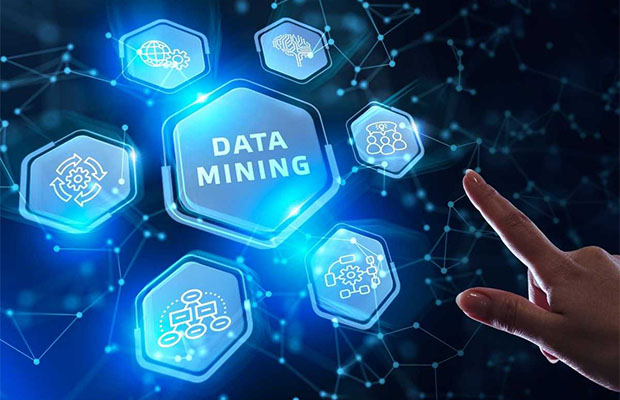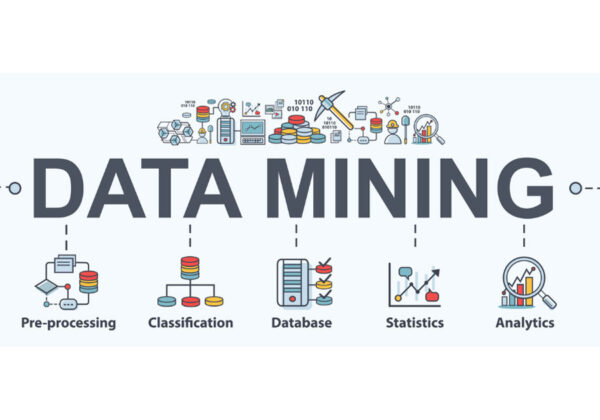In general, the term “data mining” refers to the process of analyzing large amounts of data in order to find patterns and learn more about them. Do you know what is classification in data mining?
Classification is a data analysis task, i.e. the process of finding a model that describes and distinguishes data classes and concepts. On the basis of a training set of data containing observations and subpopulations whose membership in the various categories is known, classification is the problem of determining which of a set of categories (subpopulations) a new observation belongs to.
This article gave a thorough introduction to data mining classification, data mining applications for classification, and other topics.
Table of Contents
What Is Data Mining?
Data mining is the process of analyzing data in order to find patterns and gain a deeper understanding of them. It entails examining the patterns found to determine their best application.
When you perform data analysis, you must sort through large data sets, identify the necessary patterns, and create relationships. You cannot finish a data analysis process without it because it is one of the crucial steps in the process.
Data mining is one of the initial steps in any process of data analysis. Therefore, it’s crucial to carry out data mining correctly.

What Is Classification In Data Mining?
Data points are typically divided into various classes using the common technique of classification in data mining. Any type of data set can be organized using it, including small and straightforward datasets as well as complex and enormous ones.
It mainly entails using algorithms that you can easily change to enhance the data quality. This is a major factor in the prevalence of supervised learning with classification in data mining techniques. Connecting an interesting variable with the necessary variables is the main objective of classification. The relevant variable must be of a qualitative nature.
The algorithm creates the connection between the variables for prediction. The classifier is the algorithm you use in data mining for classification, and the observations you make using it are referred to as instances. When working with qualitative variables, you use classification techniques in data mining.
There are various classification algorithm types, each with a special set of capabilities and uses. Data extraction from a dataset is accomplished using each of those algorithms. The task’s objective and the type of data you need to extract will determine which application you use.
How Does Classification In Data Mining Function?
As mentioned above, the way in which classification works is with the help of a bank loan application. The data classification system is divided into two phases: classifier or model creation and classification classifier.
1. Creating or developing the classifier The learning process or stage is represented at this level. At this point, the classifier is built by the classification algorithms. A training set of database records and the corresponding class names is used to build a classifier. A category or class is used to describe each category that makes up the training set. The terms “samples,” “objects,” and “data points” can also be used to describe these records.
2. Classifier application for classification: This level of classification makes use of the classifier. We gauge the classification algorithm’s precision using the test data in this case. The classification rules may be expanded to include additional data records if the consistency is judged to be sufficient. It includes:
- Sentiment Analysis: Monitoring social media effectively requires sentiment analysis. We can use it to gather social media insights. With the aid of cutting-edge machine learning algorithms, we can create sentiment analysis models to read and evaluate misspelled words. The precise trained models deliver consistently accurate results in a small amount of time.
- Classification of the Document: To divide the documents into sections based on their content, we can use document classification. Text classification applies to documents; the entire text of a document can be categorized. Additionally, we are able to carry it out automatically with the aid of machine learning classification algorithms.
- Image Classification: For the trained categories of an image, image classification is used. These could be the image’s caption, a statistic, or a central theme. By using supervised learning algorithms, it is possible to tag images and train your model for the appropriate categories.
- Machine Learning Classification It performs analytical tasks that would take humans hundreds of additional hours to complete using statistically demonstrable algorithm rules.
3. The process of classifying data Five steps make up the data classification process:
- Identify the architecture, strategy, and goals for the classification of your data.
- Sort the stored confidential information into categories.
- utilizing marks through data labeling.
- Use effects to increase protection and compliance.
- Data is complex, and classification is a continuous method.
Pros And Cons Of Data Mining Classification
Pros
- Compared to other data applications, data mining is very efficient and cost-effective.
- Data scientists use data mining for information analysis, risk modeling, and product safety.
- Businesses can analyze vast amounts of enterprise data with the aid of data mining classification, which also helps them make informed decisions.
- Financial institutions use data mining classification to assist loan applicants, defaulters, and other groups.
Cons
- It is a difficult and complex task to perform data mining using data analytics tools.
- When the data is mined, there are privacy issues.
- The data may become inaccurate, and sometimes there are issues with relevancy
What Is Data Classification Lifecycle?
For managing the flow of data into an enterprise, the data classification life cycle creates a great structure. Businesses must consider data security and compliance at every level. We can perform it at every stage, from origin to deletion, with the aid of data classification. Following are the stages of the data life cycle:
- Origin: It generates sensitive data in a variety of formats, including emails, Excel, Word, Google documents, social media, and websites.
- Role-based practice: According to internal protection policies and agreement guidelines, all sensitive data is tagged with role-based security restrictions.
- Storage: We now have the data that was obtained, complete with encryption and access restrictions.
- Sharing: Agents, customers, and coworkers receive data continuously from a variety of platforms and devices.
- Archive: Here, data eventually goes into the storage systems of the industry.
- Publication: It can connect with customers by publishing data. Dashboards are then available for viewing and downloading.
Steps To Data Mining Classification
Step 1: Learning Phase
The main focus of this phase of data mining classification is building the classification model using the various algorithms that are currently available. A training set is necessary for the model to learn in this step. Using the target dataset as its basis, the trained model produces accurate results. The created Classification Model is more accurate when test data is added to it.
Step 2: Classification Phase
Testing the model developed by predicting the class labels is the focus of this stage of data mining classification. This aids in determining the model’s accuracy in actual test cases.
What Are Classification Techniques In Data Mining?
Let’s first take a look at the different classification techniques that are available before talking about the different classification algorithms used in data mining. We can broadly categorize the classification algorithms into two groups:
- Generative
- Discriminative
Here is a quick breakdown of these two groups:
Generative
An algorithm for generative classification simulates the distribution of distinct classes. Through distribution estimation and model assumption testing, it attempts to learn the model that generates the data. To forecast unknown data, using generative algorithms.
The Naive Bayes Classifier is a well-known generative algorithm.
Discriminative
A simple classification algorithm is used to identify a class for each row of data. It bases its models on the observed data and relies less on the data’s distributions and more on their quality.
A superior category of discriminative classifiers is logistic regression.
2 Main Categories Of Classifiers
- Discriminative: It is a very simple classifier that assigns a single class to each row of data. It attempts to model only using the observed data and heavily relies on the accuracy of the data rather than distributions.
Example: Logistic Regression - Generative: By estimating the model’s assumptions and distributions, it attempts to learn the model that creates the data in the background and models the distribution of each class separately. utilized to forecast unknown data.
Example: Naive Bayes Classifier
Using historical data to identify spam emails Consider 100 emails, even if they are divided in half (1:4). Spam emails constitute 25% of Class A, and Class B comprises the remaining 75%. 75%(Now, if a user wants to verify that an email is a spam, they can look to see if it contains the word cheap.
It appears that in Class A (i.e. in 25% of data), 20 out of 25 emails are spam, and the rest are not.
And out of 75 emails in Class B (i.e., 75% of data), 70 emails do not spam and the remaining three are.
So, if the email contains the word cheap, what is the probability of it being spam
Conclusion
Among the most well-liked subsets of data mining is classification. As you can see, it has a wide range of applications in our daily lives.
By mapping out strategies derived from enterprise data, data mining enables organizations to stay ahead of the competition.
Also Read: What is Clustering in Data Mining?




